When it comes to best interior paint finish and transforming the look and feel of your home, few things are as impactful as a fresh coat of paint. The color you choose is undoubtedly important, but have you ever considered the finish? The right best interior paint finish can enhance the aesthetic appeal of your walls and create the desired ambiance in each room.

In this comprehensive guide, I’ll walk you through the best interior paint finishes for walls. Whether you prefer a contemporary matte finish or a sleek and glossy look, we’ve got you covered. So, let’s dive in and explore the wonderful world of paint finishes!
The Importance of Choosing the Right Interior Paint Finish for Your Walls
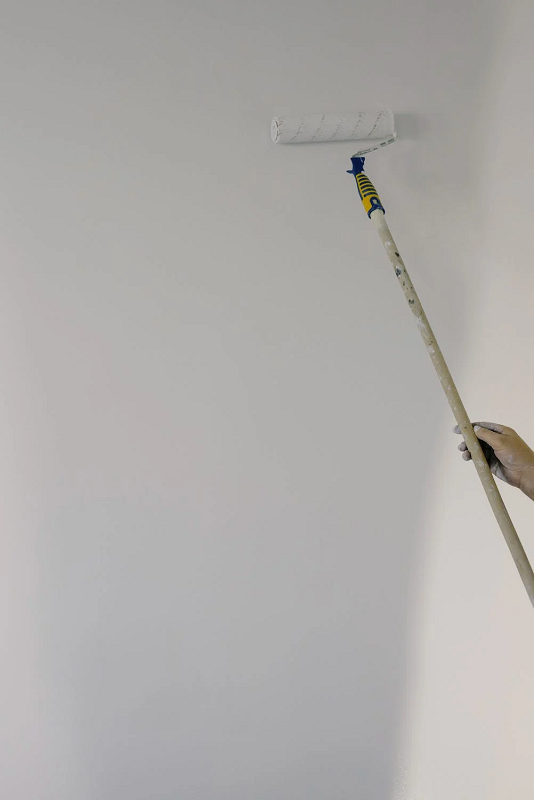
Choosing the best interior paint finish for your walls is crucial as it plays a significant role in the overall aesthetics, functionality, and longevity of the painted surfaces. The finish you select can completely transform the look and feel of a space, enhancing its visual appeal and setting the desired ambiance. Here are some key reasons why choosing the right finish is important:
“The sheen of your paint is just as important as the color. It can completely change the look and feel of a space.”
Says Joanna Gaines, interior designer
- Aesthetics: The best interior paint finish of your walls can greatly impact the overall appearance of a room. Different finishes, such as matte, satin, eggshell, or high-gloss, have distinct visual characteristics. A matte finish provides a smooth and subtle appearance, while a high-gloss finish offers a reflective and luxurious look. By selecting the appropriate finish, you can achieve the desired style and ambiance that aligns with your personal taste and the overall design theme of the room.
- Light Reflection: The finish of the paint can affect how light interacts with the walls. Glossier finishes tend to reflect more light, making a space appear brighter and more vibrant. On the other hand, matte finishes absorb light, creating a softer and more subdued atmosphere. Consider the natural and artificial lighting in the room and choose a finish that complements the desired lighting effect.
- Durability and Maintenance: The best interior paint finish can contribute to the durability and ease of maintenance of the painted surfaces. Finishes such as satin or semi-gloss are more resistant to stains, moisture, and wear and tear. They are easier to clean and can withstand frequent wiping or scrubbing. In high-traffic areas or rooms prone to moisture, such as kitchens or bathrooms, choosing a durable finish becomes even more important to ensure longevity and easy upkeep.
- Functional Considerations: Different rooms have different functional requirements, and the right finish can address those needs. For example, in a children’s playroom, a washable and stain-resistant finish would be ideal to handle any accidental spills or crayon marks. In a bedroom or living room where a cozy and calm atmosphere is desired, a matte or satin finish can create a soothing environment. By selecting the appropriate finish, you can tailor the functionality of each room to suit its specific purpose.
- Protection and Longevity: The right finish can provide a protective layer to the painted surfaces, extending their lifespan. Some finishes offer added benefits such as resistance to fading, cracking, or yellowing over time. By choosing a finish that provides adequate protection, you can ensure that your walls and other painted surfaces remain in good condition for years to come.
It’s essential to consider these factors when selecting the best interior paint finish for your room to achieve the desired visual impact, functionality, and durability. Take into account your personal preferences, the purpose of the room, and the specific requirements of each space. Consulting with professionals or seeking advice from knowledgeable paint store representatives can also provide valuable insights and help you make an informed decision.
1. Matte Finish: Embrace Elegance and Sophistication
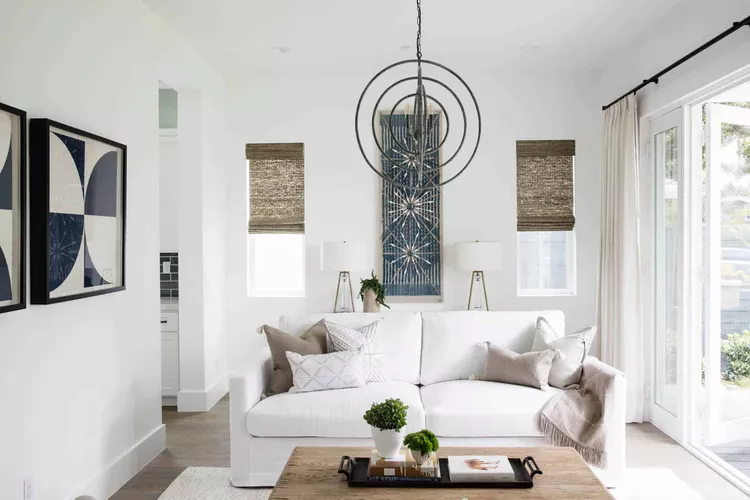
If you’re aiming for a sophisticated and refined look, a matte finish is an excellent choice for your interior walls. This low-sheen finish creates a smooth and velvety appearance that adds a touch of elegance to any room. With its ability to hide imperfections on the wall surface, matte paint is a popular choice for living rooms, bedrooms, and dining areas.
Pro Tip: Before applying a matte finish, make sure your walls are properly prepped and smooth. Any existing bumps or cracks can become more pronounced with this type of finish.
Also: Step-by-Step Guide to Declutter Your Home
Best Uses For Matte Finish:
- Living rooms
- Bedrooms
- Dining Room
- Ceiling
- Plaster walls
2. Eggshell Finish: A Balance of Beauty and Durability
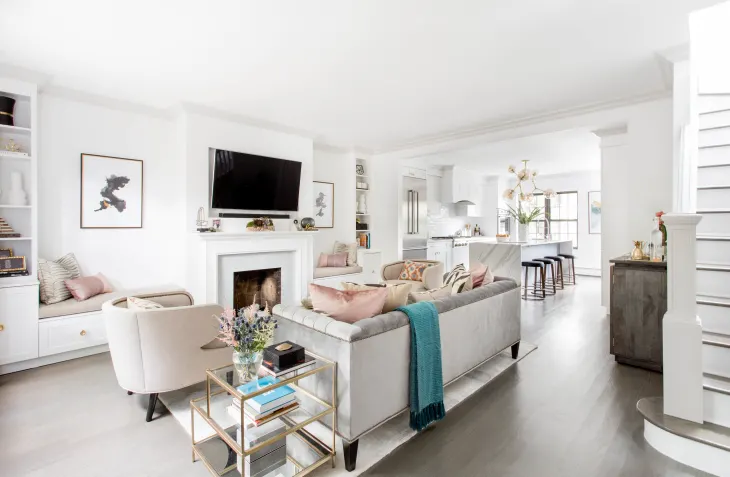
Are you looking for a best interior paint finish that strikes a balance between aesthetics and durability? Look no further than the eggshell finish. With a subtle sheen that resembles the texture of an eggshell (hence the name), this finish offers a touch of elegance while being more forgiving to daily wear and tear.
Did you know? The eggshell finish is particularly suitable for high-traffic areas like hallways and entryways, as it is resistant to stains and easy to clean.
“If you are looking for a way to style your space with wall art without breaking your piggy bank, then I recommend reading “10 Surprising Benefits of Printable Wall Art”
Best Uses For Eggshell Finish:
- High traffic areas
- Hallways
- Entryways
- Kitchen
- Bathrooms
3. Satin Finish: Sleek and Versatile
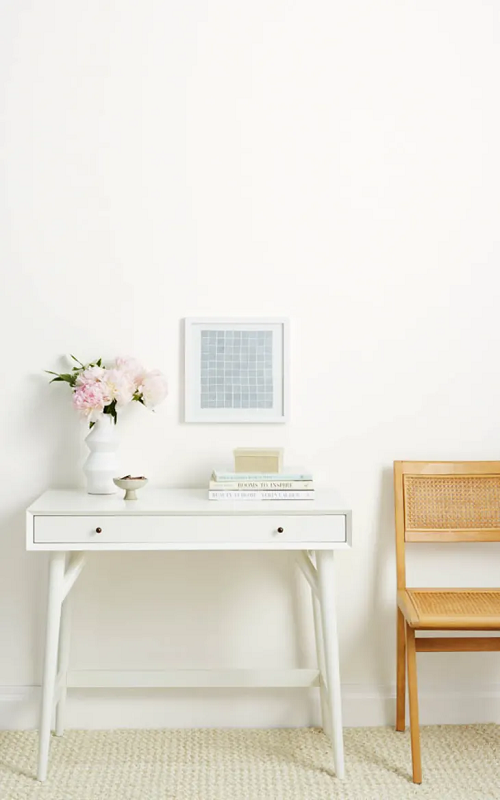
For those seeking a slightly glossier look without going overboard, a satin finish is an excellent option. This versatile paint finish offers a subtle shine that reflects light beautifully, adding depth and dimension to your walls. Satin finish is often used in bathrooms, kitchens, and children’s rooms, where durability and easy maintenance are crucial.
Pro Tip: When using a satin finish, be mindful of the surface preparation. Ensure that your walls are smooth and well-primed to achieve the best results.
Best Uses For Satin Finish:
- Bathrooms
- Kitchen
- Children’s room
- New construction walls
4. Gloss Finish: The Epitome of Elegance
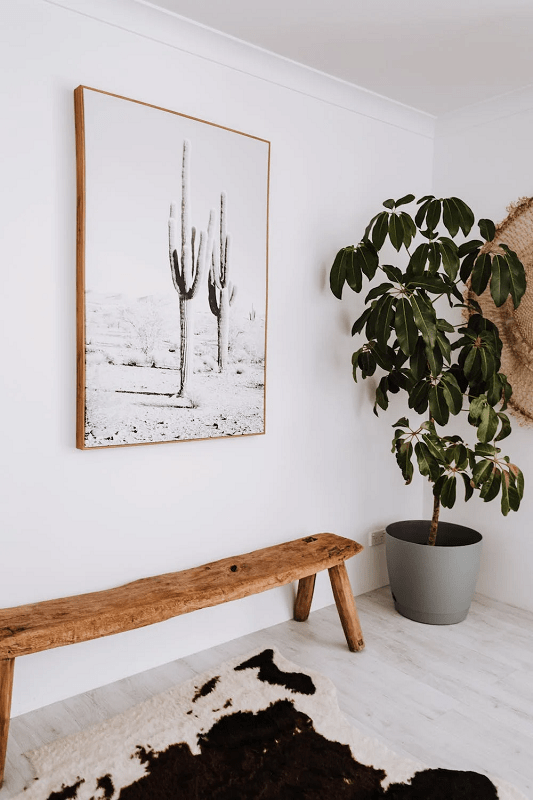
If you want to make a bold statement and create a luxurious ambiance, a gloss finish is the way to go. With its high sheen and reflective properties, gloss paint can transform any room into a stunning visual masterpiece. This finish is often chosen for accent walls, trims, and furniture, as it adds a touch of glamour and elegance.
“Gloss paint acts like a mirror, reflecting light and making small spaces feel expansive and airy. It’s perfect for adding drama and sophistication to a room.”
Says Kelly Wearstler, interior designer
Did you know? Gloss finishes are not only visually striking but also highly durable and resistant to moisture and stains. This makes them an excellent choice for areas prone to splashes and spills, such as kitchens and bathrooms.
Also: 15 Best Tips to Stage Your Home to Sell Faster
Best Uses For Eggshell Finish:
- Accent walls
- Trims
- Furniture
5. Semi-Gloss Finish: Beauty with a Protective Shield
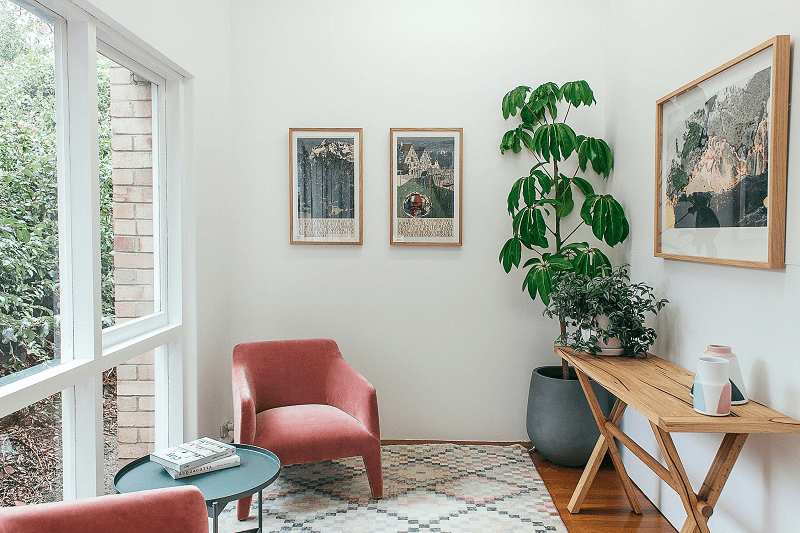
When it comes to combining beauty and protection, the semi-gloss finish is a top contender. This wall paint finish offers a subtle shine that is less reflective than the gloss finish but still adds a touch of elegance to your walls. Semi-gloss paint is highly resistant to moisture, making it a popular choice for bathrooms, kitchens, and even laundry rooms.
Pro Tip: Use a semi-gloss finish on crown moldings, baseboards, and doors to create a beautiful contrast with the rest of the wall.
Best Uses For Semi-Gloss Finish:
- Molding
- Baseboards
- Doors
- Bathrooms
- Kitchen
- Laundry Rooms
6. Flat Finish: Embrace the Minimalist Look
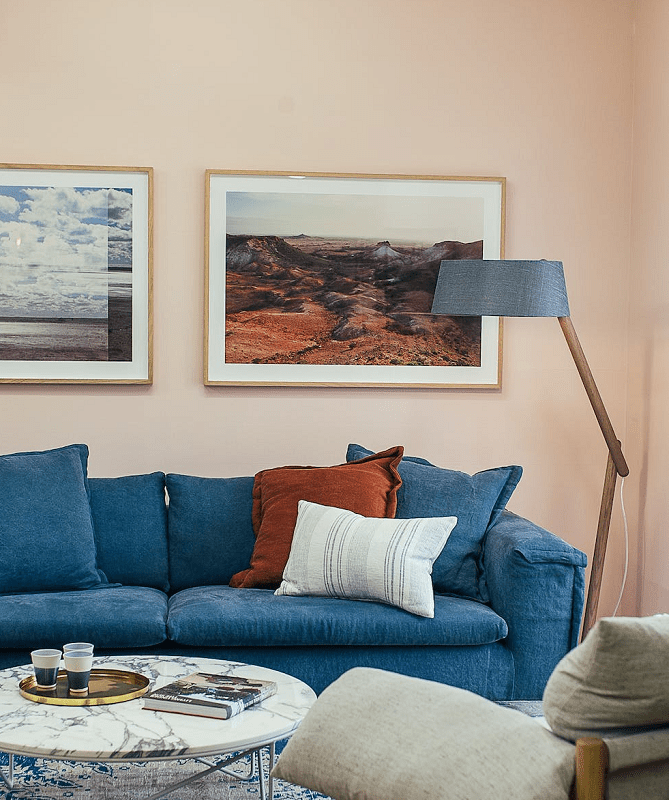
For those who appreciate a clean and minimalist aesthetic, the flat finish is the ultimate choice. This non-reflective wall paint finish offers a smooth and velvety appearance, perfect for hiding minor imperfections on the wall surface. Wall flat paint is commonly used in bedrooms, home offices, and areas where you want the focus to be on the furnishings and decor rather than the walls themselves.
Also: 15 First Steps to Creating a Decorating Plan
Did you know? Paint flat wall finish tend to be less resistant to stains and can be challenging to clean. It’s essential to consider the level of maintenance required before choosing this finish for high-traffic areas.
Best Uses For Flat Finish:
- Bathrooms
- Home office
- Ceiling
- Plaster walls
7. Pearl Finish: Subtle Shimmer for a Unique Touch
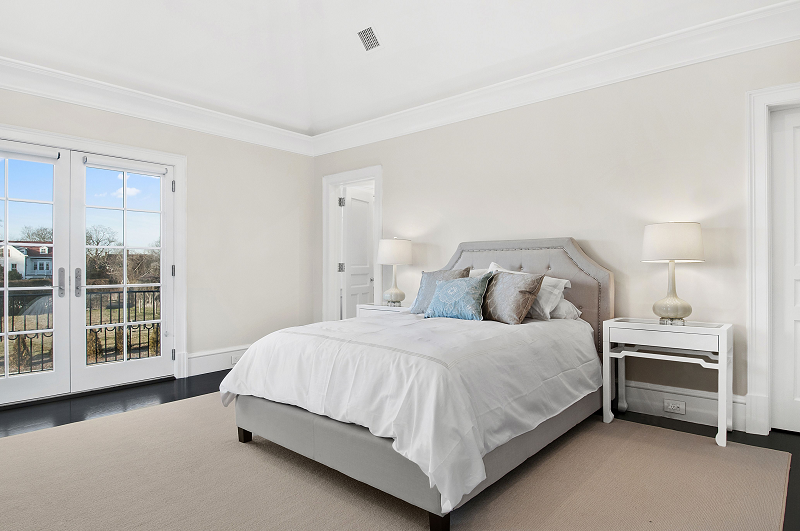
If you’re looking to add a touch of glamour and sophistication to your walls, consider a pearl finish. This specialty interior paint wall finish offers a subtle shimmer that creates a soft glow when light hits the surface. Pearl finishes are often used in formal dining rooms, powder rooms, and other areas where you want to create a memorable visual impact.
Pro Tip: To enhance the beauty of a pearl finish, consider incorporating ambient lighting in the room. This will create an enchanting atmosphere that showcases the shimmering effect.
Best Uses For Pearl Finish:
- Dining rooms
- Powder rooms
- Bathrooms
8. Metallic Finish: Embrace the Modern Look
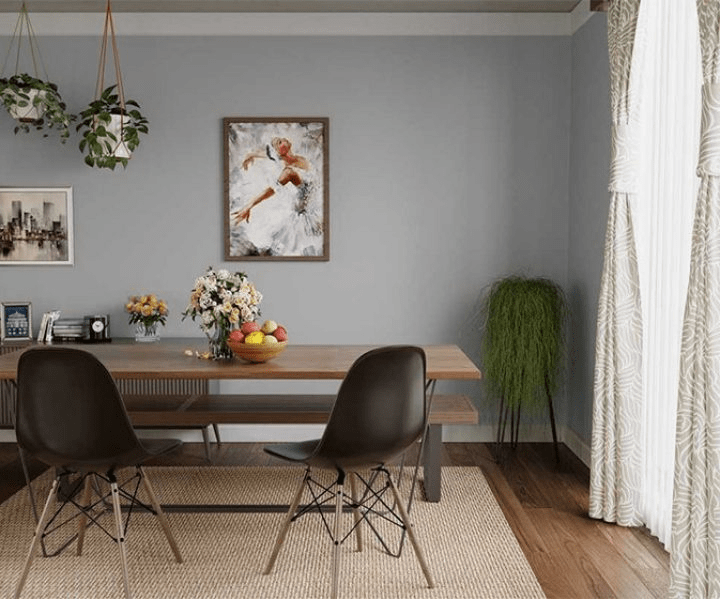
For those who crave a contemporary and edgy aesthetic, a metallic interior paint finish can be a game-changer. This unique finish adds a reflective and metallic sheen to your walls, instantly transforming them into a focal point. Metallic finishes are commonly used in modern and industrial-inspired spaces, such as lofts and entertainment rooms.
Did you know? Metallic finishes can be applied as an accent or feature wall to create a visually stunning effect. Consider using them in areas that can benefit from a touch of drama and flair.
Best Uses For Metallic Finish:
- Lofts
- Entertainment rooms
- Ceiling
- Accent walls
9. Textured Finish: Adding Depth and Personality
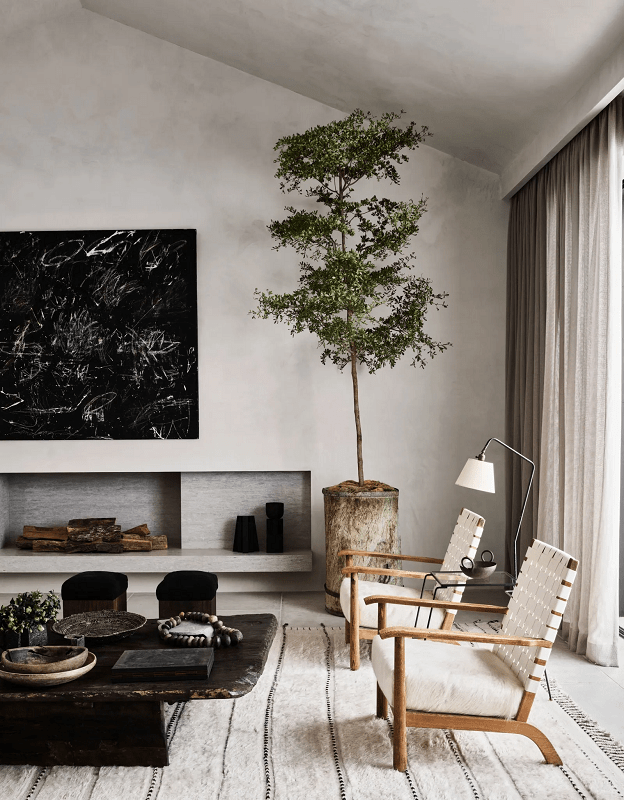
Looking to add depth and texture to your walls? Textured finishes are a fantastic way to bring personality and visual interest to any room. From the timeless elegance of Venetian plaster to the rustic charm of sandstone, textured finishes offer endless possibilities for creativity and customization.
“Texture adds another layer of dimension and interest to a space, making it feel more dynamic and visually engaging. It also helps to hide imperfections and create a sense of warmth and depth.” and
Says Michelle Rimmer, British interior designer
Pro Tip: When choosing a textured finish, consider the overall style of your home. Opt for textures that complement the existing decor and architectural features.
Best Uses For Textured Finish:
- Accent walls
- Dining rooms
- Living rooms
- Basement
- Bedrooms
- Powder rooms
10. Chalkboard Finish: Unleash Your Creativity
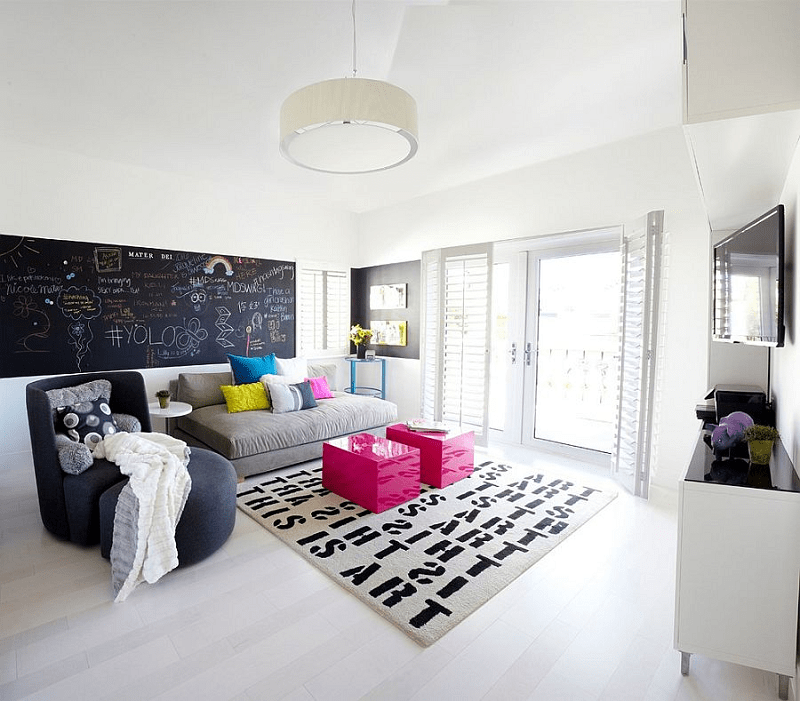
If you’re seeking a unique and interactive element for your walls, a chalkboard finish is a fun and creative choice. This finish turns any wall into a chalkboard, allowing you to write, draw, and doodle to your heart’s content. Chalkboard wall paint finishes are particularly popular in children’s playrooms, kitchens, and home offices.
Also: How to Unite Multiple Rooms with the Same Look: A Comprehensive Guide
Did you know? Chalkboard interior paint finish can also be used to create an organizational wall, where you can jot down schedules, to-do lists, and important reminders.
Best Uses For Chalkboard Finish:
- Children’s rooms
- Playrooms
- Kitchen
- Home office
- Basements
What Factors to Consider When Choosing Best Interior Paint Finish
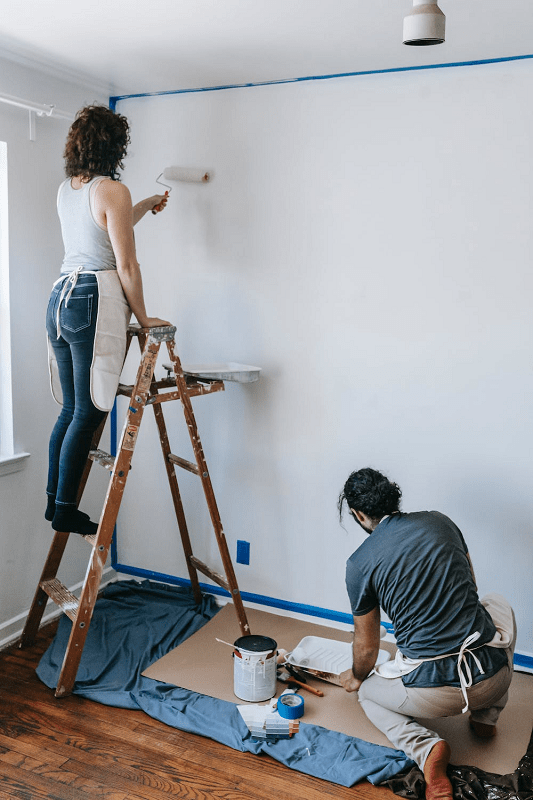
Choosing the best interior paint finish for your home involves considering several factors to ensure that you make the best decision. Here are some key factors to keep in mind:
- Style and Aesthetic: Consider the overall style and aesthetic you want to achieve in your space. Different finishes can evoke different atmospheres, whether it’s a sleek and modern look or a rustic and cozy feel. Think about how the finish will complement your existing furniture, decor, and architectural elements.
- Function and Room Usage: Take into account the function and usage of the room when selecting a wall finish. High-traffic areas, such as hallways and entryways, may require more durable and stain-resistant finishes. Bedrooms and living rooms may benefit from finishes that offer a calming and relaxing ambiance.
- Lighting Conditions: Consider the lighting conditions in the room. Natural light and artificial lighting can significantly affect how the finish appears. Glossy finishes reflect light more, while matte finishes absorb light. Take samples of different finishes and observe them in various lighting conditions to see how they behave.
- Maintenance and Durability: Evaluate the maintenance requirements and durability of different finishes. Some finishes are easier to clean and more resistant to stains and wear and tear. If you have young children or pets, you may want to choose finishes that can withstand their activities.
- Surface Preparation: Assess the condition of your walls and the required surface preparation for different finishes. Some interior paint finishes may require additional steps such as priming or smoothing out imperfections. Ensure that the chosen finish is compatible with the existing wall surface and any previous finishes.
- Personal Preference: Ultimately, your personal preference and style should guide your decision. Consider what appeals to you aesthetically and emotionally. Experiment with samples and consult with professionals if needed to make an informed choice.
Best Interior Paint Finish Type for Different Surfaces
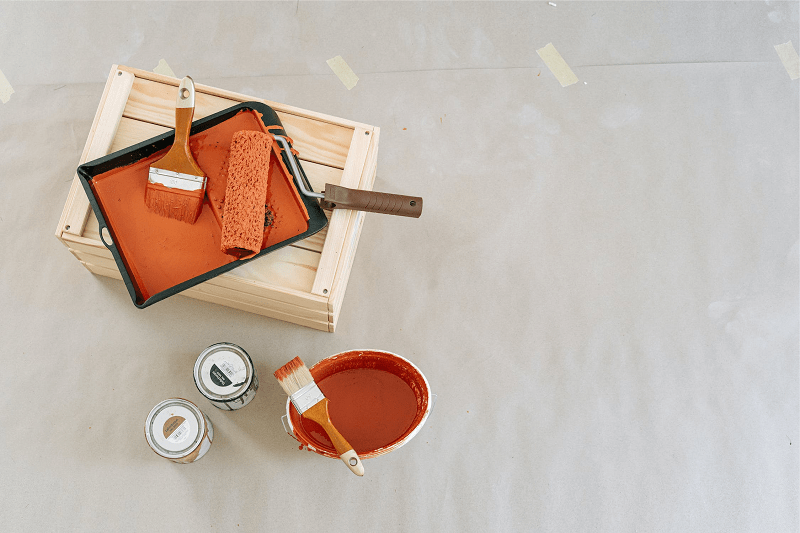
Choosing the right Interior paint finish type for different surfaces in your home is crucial to achieve optimal results. Here’s a breakdown of the recommended paint types for various commonly painted surfaces:
- Walls: For interior walls, latex or acrylic-based paints are the most common and versatile choices. They offer excellent coverage, durability, and ease of application. Look for paints labeled as “interior wall paint” or “latex wall paint.” These paints are available in a variety of finishes, allowing you to choose the desired level of sheen for your walls.
- Ceilings: When it comes to ceilings, it’s best to use flat or matte finish paints. These finishes help to minimize glare and hide imperfections on the ceiling surface. Look for paints specifically designed for ceilings, as they are formulated to provide uniform coverage and have better resistance to drips and splatters.
- Cabinets: Cabinets, particularly those found in kitchens and bathrooms, require paint that is durable and can withstand regular cleaning. For cabinets, it is recommended to use either oil-based or water-based enamel paints. These paints provide a hard and durable finish that is resistant to moisture, stains, and chipping. Be sure to properly prep the cabinets by cleaning, sanding, and priming them before applying the paint.
- Wood Furniture: When painting wood furniture, it’s important to consider the type of wood and the desired outcome. For most furniture pieces, latex or acrylic-based paints work well. They offer good adhesion, durability, and a wide range of color options. However, if you’re working with bare or unfinished wood, consider using a primer first to ensure proper adhesion and a smooth finish.
- Trim: Trim, including baseboards, crown moldings, and window casings, benefits from a crisp and durable finish. Oil-based or water-based semi-gloss or high-gloss paints are commonly used for trim. These paints provide a smooth and lustrous finish that adds a touch of elegance to the architectural details in your home. Semi-gloss and high-gloss finishes are also more resistant to moisture, making them suitable for areas prone to splashes and spills.
It’s important to note that specific products and interior paint types may vary based on brand and manufacturer. Always refer to the paint manufacturer’s recommendations and follow the instructions provided on the paint can for the best results.
Additionally, if you’re unsure about the best interior paint finish type for a particular surface or if you have specific requirements, it’s advisable to consult with a professional painter or seek guidance from a knowledgeable paint store representative.
How Much Interior Paint Finish Do You Need for Each Project?
Determining the right amount of paint needed for a project is essential to avoid running out of paint or wasting excess material. The amount of paint required depends on several factors, including the size of the surface area, the type of paint, and the number of coats desired. Here are some guidelines to help you estimate the amount of paint needed for common painting projects:
- Walls: To estimate the amount of paint needed for walls, measure the total square footage of the wall surface, including windows and doors. As a general rule, one gallon of paint typically covers around 350-400 square feet with a single coat. If you plan to apply multiple coats or have textured walls, you may need more paint. Divide the total square footage by the coverage rate of the paint you’re using to determine the number of gallons required.
- Ceilings: Ceiling paint coverage is similar to wall paint. Measure the total square footage of the ceiling and use the same coverage rate as walls. Keep in mind that ceilings usually require a single coat unless you’re using a specific textured or decorative technique.
- Cabinets: Calculating the amount of paint for cabinets involves measuring the surface area of each cabinet door and the cabinet frame. Consider whether you plan to paint both sides of the doors and if you’ll be painting the interior of the cabinets as well. A quart of paint is typically sufficient for smaller cabinet projects, while larger projects may require a gallon or more. Be sure to account for any additional coats and priming if necessary.
- Wood Furniture: Estimating paint needs for wood furniture depends on the size and intricacy of the piece. Measure the surface area to be painted, including the top, sides, drawers, and any other exposed areas. A quart of paint is generally enough for smaller furniture items, while larger pieces may require a gallon or more. Remember to consider any additional coats and priming requirements.
- Trim: To estimate paint requirements for trim, measure the linear footage of the trim to be painted. Multiply the linear footage by the width of the trim to calculate the surface area. Trim typically requires less paint compared to walls, and a quart or gallon should be sufficient for most projects.
It’s important to note that these are general guidelines, and factors such as the texture of the surface, the porosity of the material, and the application method can affect paint coverage. Additionally, it’s always a good idea to purchase a little extra paint to account for touch-ups and future maintenance.
If you’re unsure about the amount of interior paint finish needed for your specific project, consult the paint manufacturer’s guidelines or consult with a professional painter for more accurate estimates. Proper estimation ensures that you have enough paint to complete the job and achieve a consistent and satisfactory finish.
Also: 31 Most Important Popular Interior Design Styles You Should Know About
Most Popular Post:
10 Surprising Benefits of Printable Wall Art
15 Must-Have Accessories For Styling A Coffee Table
How to Choose the Perfect Interior Color Scheme for Your Home
Expert Guide On How To Buy A Rug For Each Room
Conclusion
choosing the right interior paint finish for your walls can significantly impact the overall look and feel of your home. Each finish offers unique characteristics that can enhance the aesthetics, durability, and ambiance of your space. Whether you prefer the elegant sophistication of matte finishes, the sleekness of gloss finishes, or the creativity of specialty finishes, there’s a perfect paint finish waiting for you.
Take the time to consider the function of each room, your personal style, and the desired atmosphere when selecting a paint finish. And remember, proper surface preparation and quality paint products are essential for achieving the best results. So go ahead, grab a paintbrush, and let your walls become a canvas for your creativity!
Best Interior Paint Finish (FAQs)
1. Can I use different interior paint finishes in different rooms?
Absolutely! In fact, using different paint finishes throughout your home can help create distinct moods and atmospheres in each room. Consider the function of each space, the amount of natural light it receives, and the desired aesthetic when choosing the paint finishes.
2. Are glossy finishes more durable than matte finishes?
Yes, glossy finishes tend to be more durable than matte finishes. The high sheen of gloss paint makes it more resistant to stains, moisture, and general wear and tear. However, it’s important to note that glossy finishes may also highlight imperfections on the wall surface more than matte finishes.
3. Can I apply a different finish over an existing finish?
In most cases, it is possible to apply a different finish over an existing one. However, proper surface preparation is crucial for a successful result. Ensure that the existing finish is clean, smooth, and free from any peeling or flaking. Consider consulting with a professional or referring to the paint manufacturer’s guidelines for specific recommendations.
4. How do I maintain and clean different paint finishes?
Each paint finish requires different maintenance and cleaning methods. For matte and flat finishes, it’s best to avoid harsh scrubbing and instead use a soft cloth or sponge with mild soap and water. For glossier finishes, you can use a gentle cleaning solution or specialized paint cleaners. Always refer to the manufacturer’s instructions for the specific finish you’re working with.
5. Can I paint over a textured finish?
Yes, you can paint over a textured finish. However, it’s important to consider the desired outcome and the type of texture you’re working with. Smooth textures may be easier to paint over, while more intricate or heavily textured surfaces may require additional preparation or priming. Consult with a professional or refer to the manufacturer’s recommendations for the best approach.
6. Are there eco-friendly options for interior paint finishes?
Yes, there are eco-friendly paint options available in various finishes. Look for paint brands that offer low or zero VOC (Volatile Organic Compound) formulations. These paints are better for indoor air quality and minimize harmful emissions. Additionally, some brands offer water-based and plant-based paint finishes that are more environmentally friendly.
Subscribe To Newsletter!
Subscribe now for an endless feed of inspirational women cave decor ideas, pampering rituals and more tips for curating your ultimate escape. Let’s get started on making your cozy refuge a reality – you so deserve this!
CATCH THE LATEST IN HOME DECOR TRENDS:

Steal These 15 Expert-Approved Decorating Secrets

How To Accessories Your Living Room

Small Space? 10 Ways To Make A Room Appear Bigger

Make Your space Look Expensive
GET CAUGHT UP ON ALL THE INSPIRING DECOR TIPS:

18 Fresh Decorating Ideas To Update Your Fireplace

How To Create An Art Gallery Wall

